MARKETING
14 Best Screen Recorders to Use for Collaboration

For your team, screen recorders can be used for several reasons — from creating tutorials for your website to recording a recurring tech issue to sending your marketing team a quick note instead of an email.
Plus, we can’t forget about product demos and training videos that can be used by many departments on your team, from marketing to sales to customer service.
Below, let’s learn about the best free and paid screen recording options for your company — whether you work at a small business or enterprise company.
What is the best screen recorder?
What’s considered the best will depend on what you need. Are you using it for work? For fun? Will you be live streaming on another platform? Once you’ve figured out your use cases, it will be easier to choose a screen recording tool.
Other qualities you should take into account include:
- Cost
- User interface and ease of use
- Built-in editing tools
- Sound quality
While we can’t definitively tell you which screen recorder is best for you, we’ve come up with a list of some of our top choices.
Best Screen Recorders
- Loom
- Screencastify
- OBS Studio
- RecordScreen.io
- CloudApp
- TinyTake
- Camtasia
- SnagIt
- Droplr
- OneScreen
- Clip by ClickUp
- Vmaker
- Screencast-O-matic
- Bandicam
Best Screen Recorder Tools Overall
1. Loom
Price: Starter Plan, free; BusinessPlan, $12.50/user/month; Enterprise, contact for pricing
Best for: Work communication
Pros:
- Background noise suppression
- Viewer insights
- Can create a team workspace for storing and sharing videos
- Integrates with Slack, Jira, Dropbox, GitLab, and more
Cons:
- 5 minute recording limit with Starter Plan
- Limited editing features
Loom is one of the best screen recorders on the market for Mac, Windows, and iOS.
You can easily record your whole screen or a partial screen and narrate using your microphone. At HubSpot, we’ve been known to use it to disseminate information to our marketing team.
When you’re done recording, it offers easy editing capabilities, allowing you to trim the video or add a call-to-action (CTA) and custom thumbnail.
To share your video, you can instantly share with a link and even add a password for extra privacy. Loom’s easy-to-use platform and privacy features make it an excellent choice for workplace communication.
Overall, this is a great choice because it’s quick, easy to use, and offers everything you’d need.
2. Screencastify
Price: Free; Starter, $7/user/month; Pro $10/user/month
Best for: Tutorial videos
Pros:
- Easy to use for newbies
- All videos are saved in Google Drive for easy access
- Ability to add interactive questions to check for information retention
Cons:
- For chrome devices and browsers only
- Limited editing capabilities
Screencastify is a Google Chrome screen recorder that is best used for creating tutorial videos.
With its free version, you can easily record up to five minutes per video of your screen and webcam, add annotations, trim your videos, and export to Google Drive or publish to YouTube.
The paid versions offer some more bells and whistles, most notably the unlimited recording length, and priority support.
Other features include narration, offline recording, the ability to instantly share via Google Drive, and direct upload capabilities.
The easy annotations and customizable screen options make it an excellent choice for tutorial videos.
3. OBS Studio
Price: Free
Best for: Professional live streaming
Pros:
- Easy to customize
- Great for streaming on platforms like Twitch or YouTube
- Offers several premade scenes
Cons:
Open Broadcaster Software (OBS) is a screen recording software mainly used for live streaming on platforms like Twitch and YouTube.
When you begin recording, you can choose what part of the screen you want to capture and will have access to an audio mixer. The audio mixer will allow for professional sound quality.
With OBS, you can record an unlimited amount of scenes, switching seamlessly with custom transitions.
Additionally, this software offers a streamlined settings panel so you have a variety of configuration options for your broadcast or recording.
The customizability makes it one of the best screen recorders.
4. RecordScreen.io
Price: Free
Best for: No frills videos
Pros:
- No time limits
- Easy to use
- No watermarks
Cons:
- No built-in converter
- Requires internet connection
- No additional video formats
If you want an absolutely zero-frills, easy-to-use option, RecordScreen.io is one of the best options.
All you need to do is go to the site and click Record. Then, you’ll choose whether to record the webcam and screen or just the screen.
When you’re finished, all you have to do is download the video.
5. CloudApp
Price: Free; Individual, $9.95/month; Team, $8/user per month; Enterprise, contact for pricing
Best for: Enterprise recording communication
Pros:
- Ability to annotate screenshots
- Easy to share files with a simple link
- Can customize your content with logos and other features
Cons:
- File size could be improved
- Limited editing features
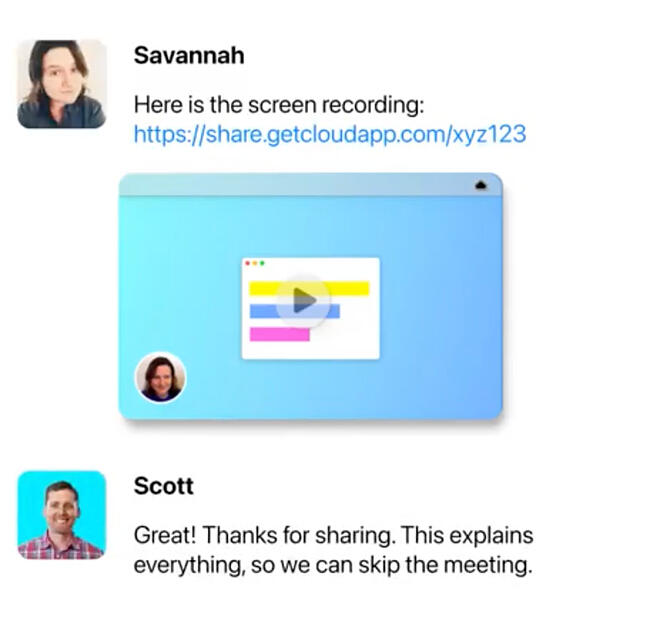
CloudApp is a great option for the enterprise company in need of screen recording capabilities.
However, it still offers lightweight versions for smaller teams. With the free version, you can create short videos with annotations, GIFs, and basic editing capabilities.
Still, you’ll have to pay for the more robust enterprise tool. With paid versions, you’ll have access to custom branding, management, and support tools that the other plans don’t have.
Additionally, CloudApp offers analytics and insights into who views your content and from where.
These robust enterprise capabilities make it an excellent option for larger companies.
6. TinyTake
Price: Basic, free; Standard, $29.95/year; Plus, $59.95/year; Jumbo, $99.95/year
Best for: Annotated videos
Pros:
- Simple interface
- Uses minimal RAM resources
Cons:
- Very limited capabilities on the free version
TinyTake is another screen recording option for Windows and Mac users.
When you begin recording your screen, you can capture images, videos, and presentations. Additionally, you can add comments and annotations.
In fact, the annotation toolset is one of the most unique features. You can easily add text, highlight, draw arrows, or blur parts of your screen for privacy. This tool is a convenient way to annotate product reviews or demos.
To get the most out of this product, you’ll want to buy a paid version. The biggest difference in the free and paid versions is the recording limit and annotation capabilities.
7. Camtasia
Price: Individual, $299 one-time fee, install on two machines per user; Business, $239 – 299 depending on the size of your team
Best for: Professional videos
Pros:
- Robust editing features
- Helpful tutorials and website support available
- Supports multiple media formats
Cons:
- Expensive compared to other options

Camtasia is a screen recording option for Mac and Windows users that are looking to create professional-looking videos such as webinars, explainer videos, or knowledge base videos.
With this software, you can record your screen and audio, add effects including text and transitions, and instantly upload your video to YouTube, Vimeo, or Screencast.
Additionally, this software offers features including music and audio from its royalty-free music and sound effects, catchy titles and annotations, quizzes for interactivity, and animated transitions.
The built-in video editing tool is what sets it apart from other screen recording software, giving this software the ability to create more put-together videos for your team.
8. SnagIt
Price: Individual, $62.99 one-time fee, install on two machines per user; Business, $31.99 – 62.99 depending on the size of your team; Education, $22.46 – $37.99 depending on the size of your team
Best for: Visual instruction videos
Pros:
- Has a built-in Gif maker
- Can create and share custom templates
- Can export files to cloud storage
Cons:
- One of the pricier options on this list
With this option, your team can easily create instructional videos that are customizable.
Before you begin, you can choose to create a video from templates, images, or record a new video.
Once you capture the process, you can markup the screenshots or talk through the process and add in visual instructions including custom how-to guides or tutorials.
Additionally, SnagIt offers other customizable options. You can easily move objects around on your screen capture, rearrange buttons, or even delete and edit text.
Plus, the step tool allows you to quickly document a process and workflow with a series of numbers.
The customizable tools are built with step-by-step instructional videos in mind.
9. Droplr
Price: Pro, $6/month per user; Teams, starting at $79/month per user; Enterprise, custom pricing
Best for: Remote collaboration
Pros:
- Team file sharing and cloud storage
- Easy to use screen capture and recording
Cons:
- No free option
- Limited file formats for export
Droplr is a screencast tool that is best used for remote collaboration.
When you capture a screenshot or record your screen, you can explain your thoughts by adding messages with the text field.
Additionally, there’s also a privacy feature so you can blur sensitive information to keep your content safe.
However, one of the best tools is that your videos can be branded, with customizable short links using your company domain, adding a company logo, and using your own branding images for professionalism.
Overall, the advanced annotation feature makes this a great option for remote teams to get their jobs done faster.
10. OneScreen
Price: OneScreen Hype, $10/month; OneScreen Annotate, $100 Perpetual License
Best for: Collaboration and video conferencing
Pros:
-
Works in browser so no download required
-
Built-in whiteboard tools
-
Customer support available
Cons:
OneScreen is a browser-based video conferencing tool companies can use to collaborate, meet, train, or present.
One of its most basic capabilities is the screen sharing and recording function, so your team can record any meeting right in the browser, no download required.
Additionally, there are robust annotation and whiteboard tools your team can utilize.
While OneScreen works well with enterprise companies who need video conferencing hardware and software, it also offers more affordable software for smaller companies.
11. Clip by ClickUp
Price: Free Forever; $5/mo. for Unlimited, $12/mo. for Business; Business Plus $19/mo
Best for:Productivity and work management
Pros:
- Free training and 24-hour support
- Create tasks from your recordings
- Easy share links, no downloads required
Cons:
ClickUp is a powerful productivity tool that includes task management, goal tracking, dashboards, 15+ views, and hundreds of features that can be customized for any work need.
ClickUp offers a free in-app screen recording tool,Clip, that allows you to capture your entire screen, app window, or your browser tab, and add voice messages over your recordings directly from your microphone.
Once your recordings are ready, you can share them with anyone via a link that plays in any browser, or view them instantly after recording, no downloads required.
Additionally, it allows you to create a task from your recording, add a description, and assign team members so everyone knows the full context and what to do next. Sometimes it’s more effective to show than tell, especially if you’re a visual learner.
12. Vmaker
Price: Lite Plan, Free; Starter Plan, $7/month; Teams Plan, $10/month; Enterprise Plan, contact for additional pricing
Best for: Sales prospecting
Pros:
- Intuitive interface
- Plenty of customization options
- 4k recording capabilities
Cons:
- Free version has a limited video length
Vmaker is an easy-to-use screen recorder that is best used for sales prospecting. Vmaker comes with Gmail and Hubspot integration that enables users to send personalized video emails from their Gmail and Hubspot accounts.
Vmaker offers highly useful branding features that allow you to customize subdomains, logos, and add a custom CTA to improve your brand visibility and response rates.
With the free version, you can record up to seven minutes per video at 720p resolution along with an inbuilt video editor that provides you with all the basic editing features.
The paid version offers advanced features and capabilities including 4K recording, pro video editing tools, unlimited recording times, and more.
Overall, Vmaker’s ease of usability and features make it an ideal tool for marketers, sales professionals, and any content creators looking to personalize their communication.
Best screen recorder for mac
13. Screencast-O-Matic
Price: Free; Deluxe, $41.65/month billed yearly; Premier, $64/month billed yearly; Max, $10/month billed yearly; lower rates for educators
Best for: Quick tutorial videos
Pro:
- Comes with royalty-free music for use
- Easy to use drag and drop interface
- Unlimited videos
Cons:
- Only exports images as PNG files
Screencast-O-Matic is another easy-to-use screen recorder that supports webcam and screen recordings.
With its free version, you can add stock music and captions to your recording, narrate from your microphone, and trim your video.
With the paid version, you’ll get more advanced animation and editing tools. For example, you can even draw on your screen while recording. Plus, you’ll have access to more music and overlay effects.
Additionally, one of the newest features is the stock library full of videos and images you can add to your recordings.
If you’re looking for a no-frills experience, the free version of Screencast-O-Matic is a great option. However, the paid options still offer advanced capabilities.
Best Screen Recorder for PC
14. Bandicam
Price: Free download or $39 one-time license fee
Best for: Webinar recordings
Pros:
- Excellent sound quality
- Easy user interface
- Uses a low amount of RAM
Cons:
- Free version has limited capabilities
- Editing requires other software
Another lightweight screen recorder is Bandicam. This is a software for Windows users making it possible to capture anything on your PC screen as high-quality video.
With Bandicam, you can record webinars, games, meetings, or Skype calls. Then, you can even add narration after the video is recorded.
Additionally, features such as real-time drawing and branding make it a competitive option.
The high-definition recordings and customizable narration options make it great for webinar recordings.
An important thing to note is that the free version places a watermark on videos, so you’ll have to be a paid user to create branded videos.
Simplify Your Workflow With Screen Recorders
Whether you need to record a message for your team, a product demo, or a webinar, you’ll have to use a screen recording software. While most easy-to-use, free options can be used for your needs, there are also more robust tools for larger companies.
Editor’s note: This article was originally published in January 2020 and has been updated for comprehensiveness.
MARKETING
Ecommerce evolution: Blurring the lines between B2B and B2C

Understanding convergence
B2B and B2C ecommerce are two distinct models of online selling. B2B ecommerce is between businesses, such as wholesalers, distributors, and manufacturers. B2C ecommerce refers to transactions between businesses like retailers and consumer brands, directly to individual shoppers.
However, in recent years, the boundaries between these two models have started to fade. This is known as the convergence between B2B and B2C ecommerce and how they are becoming more similar and integrated.
Source: White Paper: The evolution of the B2B Consumer Buyer (ClientPoint, Jan 2024)
What’s driving this change?
Ever increasing customer expectations
Customers today expect the same level of convenience, speed, and personalization in their B2B transactions as they do in their B2C interactions. B2B buyers are increasingly influenced by their B2C experiences. They want research, compare, and purchase products online, seamlessly transitioning between devices and channels. They also prefer to research and purchase online, using multiple devices and channels.
Forrester, 68% of buyers prefer to research on their own, online . Customers today expect the same level of convenience, speed, and personalization in their B2B transactions as they do in their B2C interactions. B2B buyers are increasingly influenced by their B2C experiences. They want research, compare, and purchase products online, seamlessly transitioning between devices and channels. They also prefer to research and purchase online, using multiple devices and channels
Technology and omnichannel strategies
Technology enables B2B and B2C ecommerce platforms to offer more features and functionalities, such as mobile optimization, chatbots, AI, and augmented reality. Omnichannel strategies allow B2B and B2C ecommerce businesses to provide a seamless and consistent customer experience across different touchpoints, such as websites, social media, email, and physical stores.
However, with every great leap forward comes its own set of challenges. The convergence of B2B and B2C markets means increased competition. Businesses now not only have to compete with their traditional rivals, but also with new entrants and disruptors from different sectors. For example, Amazon Business, a B2B ecommerce platform, has become a major threat to many B2B ecommerce businesses, as it offers a wide range of products, low prices, and fast delivery
“Amazon Business has proven that B2B ecommerce can leverage popular B2C-like functionality” argues Joe Albrecht, CEO / Managing Partner, Xngage. . With features like Subscribe-and-Save (auto-replenishment), one-click buying, and curated assortments by job role or work location, they make it easy for B2B buyers to go to their website and never leave. Plus, with exceptional customer service and promotional incentives like Amazon Business Prime Days, they have created a reinforcing loyalty loop.
And yet, according to Barron’s, Amazon Business is only expected to capture 1.5% of the $5.7 Trillion addressable business market by 2025. If other B2B companies can truly become digital-first organizations, they can compete and win in this fragmented space, too.”
If other B2B companies can truly become digital-first organizations, they can also compete and win in this fragmented space
Joe AlbrechtCEO/Managing Partner, XNGAGE
Increasing complexity
Another challenge is the increased complexity and cost of managing a converging ecommerce business. Businesses have to deal with different customer segments, requirements, and expectations, which may require different strategies, processes, and systems. For instance, B2B ecommerce businesses may have to handle more complex transactions, such as bulk orders, contract negotiations, and invoicing, while B2C ecommerce businesses may have to handle more customer service, returns, and loyalty programs. Moreover, B2B and B2C ecommerce businesses must invest in technology and infrastructure to support their convergence efforts, which may increase their operational and maintenance costs.
How to win
Here are a few ways companies can get ahead of the game:
Adopt B2C-like features in B2B platforms
User-friendly design, easy navigation, product reviews, personalization, recommendations, and ratings can help B2B ecommerce businesses to attract and retain more customers, as well as to increase their conversion and retention rates.
According to McKinsey, ecommerce businesses that offer B2C-like features like personalization can increase their revenues by 15% and reduce their costs by 20%. You can do this through personalization of your website with tools like Product Recommendations that help suggest related products to increase sales.
Focus on personalization and customer experience
B2B and B2C ecommerce businesses need to understand their customers’ needs, preferences, and behaviors, and tailor their offerings and interactions accordingly. Personalization and customer experience can help B2B and B2C ecommerce businesses to increase customer satisfaction, loyalty, and advocacy, as well as to improve their brand reputation and competitive advantage. According to a Salesforce report, 88% of customers say that the experience a company provides is as important as its products or services.
Market based on customer insights
Data and analytics can help B2B and B2C ecommerce businesses to gain insights into their customers, markets, competitors, and performance, and to optimize their strategies and operations accordingly. Data and analytics can also help B2B and B2C ecommerce businesses to identify new opportunities, trends, and innovations, and to anticipate and respond to customer needs and expectations. According to McKinsey, data-driven organizations are 23 times more likely to acquire customers, six times more likely to retain customers, and 19 times more likely to be profitable.
What’s next?
The convergence of B2B and B2C ecommerce is not a temporary phenomenon, but a long-term trend that will continue to shape the future of ecommerce. According to Statista, the global B2B ecommerce market is expected to reach $20.9 trillion by 2027, surpassing the B2C ecommerce market, which is expected to reach $10.5 trillion by 2027. Moreover, the report predicts that the convergence of B2B and B2C ecommerce will create new business models, such as B2B2C, B2A (business to anyone), and C2B (consumer to business).
Therefore, B2B and B2C ecommerce businesses need to prepare for the converging ecommerce landscape and take advantage of the opportunities and challenges it presents. Here are some recommendations for B2B and B2C ecommerce businesses to navigate the converging landscape:
- Conduct a thorough analysis of your customers, competitors, and market, and identify the gaps and opportunities for convergence.
- Develop a clear vision and strategy for convergence, and align your goals, objectives, and metrics with it.
- Invest in technology and infrastructure that can support your convergence efforts, such as cloud, mobile, AI, and omnichannel platforms.
- Implement B2C-like features in your B2B platforms, and vice versa, to enhance your customer experience and satisfaction.
- Personalize your offerings and interactions with your customers, and provide them with relevant and valuable content and solutions.
- Leverage data and analytics to optimize your performance and decision making, and to innovate and differentiate your business.
- Collaborate and partner with other B2B and B2C ecommerce businesses, as well as with other stakeholders, such as suppliers, distributors, and customers, to create value and synergy.
- Monitor and evaluate your convergence efforts, and adapt and improve them as needed.
By following these recommendations, B2B and B2C ecommerce businesses can bridge the gap between their models and create a more integrated and seamless ecommerce experience for their customers and themselves.
MARKETING
Streamlining Processes for Increased Efficiency and Results

How can businesses succeed nowadays when technology rules? With competition getting tougher and customers changing their preferences often, it’s a challenge. But using marketing automation can help make things easier and get better results. And in the future, it’s going to be even more important for all kinds of businesses.
So, let’s discuss how businesses can leverage marketing automation to stay ahead and thrive.
Benefits of automation marketing automation to boost your efforts
First, let’s explore the benefits of marketing automation to supercharge your efforts:
Marketing automation simplifies repetitive tasks, saving time and effort.
With automated workflows, processes become more efficient, leading to better productivity. For instance, automation not only streamlines tasks like email campaigns but also optimizes website speed, ensuring a seamless user experience. A faster website not only enhances customer satisfaction but also positively impacts search engine rankings, driving more organic traffic and ultimately boosting conversions.
Automation allows for precise targeting, reaching the right audience with personalized messages.
With automated workflows, processes become more efficient, leading to better productivity. A great example of automated workflow is Pipedrive & WhatsApp Integration in which an automated welcome message pops up on their WhatsApp
within seconds once a potential customer expresses interest in your business.
Increases ROI
By optimizing campaigns and reducing manual labor, automation can significantly improve return on investment.
Leveraging automation enables businesses to scale their marketing efforts effectively, driving growth and success. Additionally, incorporating lead scoring into automated marketing processes can streamline the identification of high-potential prospects, further optimizing resource allocation and maximizing conversion rates.
Harnessing the power of marketing automation can revolutionize your marketing strategy, leading to increased efficiency, higher returns, and sustainable growth in today’s competitive market. So, why wait? Start automating your marketing efforts today and propel your business to new heights, moreover if you have just learned ways on how to create an online business
How marketing automation can simplify operations and increase efficiency
Understanding the Change
Marketing automation has evolved significantly over time, from basic email marketing campaigns to sophisticated platforms that can manage entire marketing strategies. This progress has been fueled by advances in technology, particularly artificial intelligence (AI) and machine learning, making automation smarter and more adaptable.
One of the main reasons for this shift is the vast amount of data available to marketers today. From understanding customer demographics to analyzing behavior, the sheer volume of data is staggering. Marketing automation platforms use this data to create highly personalized and targeted campaigns, allowing businesses to connect with their audience on a deeper level.
The Emergence of AI-Powered Automation
In the future, AI-powered automation will play an even bigger role in marketing strategies. AI algorithms can analyze huge amounts of data in real-time, helping marketers identify trends, predict consumer behavior, and optimize campaigns as they go. This agility and responsiveness are crucial in today’s fast-moving digital world, where opportunities come and go in the blink of an eye. For example, we’re witnessing the rise of AI-based tools from AI website builders, to AI logo generators and even more, showing that we’re competing with time and efficiency.
Combining AI-powered automation with WordPress management services streamlines marketing efforts, enabling quick adaptation to changing trends and efficient management of online presence.
Moreover, AI can take care of routine tasks like content creation, scheduling, and testing, giving marketers more time to focus on strategic activities. By automating these repetitive tasks, businesses can work more efficiently, leading to better outcomes. AI can create social media ads tailored to specific demographics and preferences, ensuring that the content resonates with the target audience. With the help of an AI ad maker tool, businesses can efficiently produce high-quality advertisements that drive engagement and conversions across various social media platforms.
Personalization on a Large Scale
Personalization has always been important in marketing, and automation is making it possible on a larger scale. By using AI and machine learning, marketers can create tailored experiences for each customer based on their preferences, behaviors, and past interactions with the brand.
This level of personalization not only boosts customer satisfaction but also increases engagement and loyalty. When consumers feel understood and valued, they are more likely to become loyal customers and brand advocates. As automation technology continues to evolve, we can expect personalization to become even more advanced, enabling businesses to forge deeper connections with their audience. As your company has tiny homes for sale California, personalized experiences will ensure each customer finds their perfect fit, fostering lasting connections.
Integration Across Channels
Another trend shaping the future of marketing automation is the integration of multiple channels into a cohesive strategy. Today’s consumers interact with brands across various touchpoints, from social media and email to websites and mobile apps. Marketing automation platforms that can seamlessly integrate these channels and deliver consistent messaging will have a competitive edge. When creating a comparison website it’s important to ensure that the platform effectively aggregates data from diverse sources and presents it in a user-friendly manner, empowering consumers to make informed decisions.
Omni-channel integration not only betters the customer experience but also provides marketers with a comprehensive view of the customer journey. By tracking interactions across channels, businesses can gain valuable insights into how consumers engage with their brand, allowing them to refine their marketing strategies for maximum impact. Lastly, integrating SEO services into omni-channel strategies boosts visibility and helps businesses better understand and engage with their customers across different platforms.
The Human Element
While automation offers many benefits, it’s crucial not to overlook the human aspect of marketing. Despite advances in AI and machine learning, there are still elements of marketing that require human creativity, empathy, and strategic thinking.
Successful marketing automation strikes a balance between technology and human expertise. By using automation to handle routine tasks and data analysis, marketers can focus on what they do best – storytelling, building relationships, and driving innovation.
Conclusion
The future of marketing automation looks promising, offering improved efficiency and results for businesses of all sizes.
As AI continues to advance and consumer expectations change, automation will play an increasingly vital role in keeping businesses competitive.
By embracing automation technologies, marketers can simplify processes, deliver more personalized experiences, and ultimately, achieve their business goals more effectively than ever before.
MARKETING
Will Google Buy HubSpot? | Content Marketing Institute

Google + HubSpot. Is it a thing?
This week, a flurry of news came down about Google’s consideration of purchasing HubSpot.
The prospect dismayed some. It delighted others.
But is it likely? Is it even possible? What would it mean for marketers? What does the consideration even mean for marketers?
Well, we asked CMI’s chief strategy advisor, Robert Rose, for his take. Watch this video or read on:
Why Alphabet may want HubSpot
Alphabet, the parent company of Google, apparently is contemplating the acquisition of inbound marketing giant HubSpot.
The potential price could be in the range of $30 billion to $40 billion. That would make Alphabet’s largest acquisition by far. The current deal holding that title happened in 2011 when it acquired Motorola Mobility for more than $12 billion. It later sold it to Lenovo for less than $3 billion.
If the HubSpot deal happens, it would not be in character with what the classic evil villain has been doing for the past 20 years.
At first glance, you might think the deal would make no sense. Why would Google want to spend three times as much as it’s ever spent to get into the inbound marketing — the CRM and marketing automation business?
At a second glance, it makes a ton of sense.
I don’t know if you’ve noticed, but I and others at CMI spend a lot of time discussing privacy, owned media, and the deprecation of the third-party cookie. I just talked about it two weeks ago. It’s really happening.
All that oxygen being sucked out of the ad tech space presents a compelling case that Alphabet should diversify from third-party data and classic surveillance-based marketing.
Yes, this potential acquisition is about data. HubSpot would give Alphabet the keys to the kingdom of 205,000 business customers — and their customers’ data that almost certainly numbers in the tens of millions. Alphabet would also gain access to the content, marketing, and sales information those customers consumed.
Conversely, the deal would provide an immediate tip of the spear for HubSpot clients to create more targeted programs in the Alphabet ecosystem and upload their data to drive even more personalized experiences on their own properties and connect them to the Google Workspace infrastructure.
When you add in the idea of Gemini, you can start to see how Google might monetize its generative AI tool beyond figuring out how to use it on ads on search results pages.
What acquisition could mean for HubSpot customers
I may be stretching here but imagine this world. As a Hubspoogle customer, you can access an interface that prioritizes your owned media data (e.g., your website, your e-commerce catalog, blog) when Google’s Gemini answers a question).
Recent reports also say Google may put up a paywall around the new premium features of its artificial intelligence-powered Search Generative Experience. Imagine this as the new gating for marketing. In other words, users can subscribe to Google’s AI for free, but Hubspoogle customers can access that data and use it to create targeted offers.
The acquisition of HubSpot would immediately make Google Workspace a more robust competitor to Microsoft 365 Office for small- and medium-sized businesses as they would receive the ADDED capability of inbound marketing.
But in the world of rented land where Google is the landlord, the government will take notice of the acquisition. But — and it’s a big but, I cannot lie (yes, I just did that). The big but is whether this acquisition dance can happen without going afoul of regulatory issues.
Some analysts say it should be no problem. Others say, “Yeah, it wouldn’t go.” Either way, would anybody touch it in an election year? That’s a whole other story.
What marketers should realize
So, what’s my takeaway?
It’s a remote chance that Google will jump on this hard, but stranger things have happened. It would be an exciting disruption in the market.
The sure bet is this. The acquisition conversation — as if you needed more data points — says getting good at owned media to attract and build audiences and using that first-party data to provide better communication and collaboration with your customers are a must.
It’s just a matter of time until Google makes a move. They might just be testing the waters now, but they will move here. But no matter what they do, if you have your customer data house in order, you’ll be primed for success.
HANDPICKED RELATED CONTENT:
Cover image by Joseph Kalinowski/Content Marketing Institute
-

 SEO7 days ago
SEO7 days agoGoogle Limits News Links In California Over Proposed ‘Link Tax’ Law
-

 SEARCHENGINES6 days ago
SEARCHENGINES6 days agoGoogle Core Update Volatility, Helpful Content Update Gone, Dangerous Google Search Results & Google Ads Confusion
-
SEARCHENGINES7 days ago
Daily Search Forum Recap: April 12, 2024
-

 SEO6 days ago
SEO6 days ago10 Paid Search & PPC Planning Best Practices
-

 MARKETING6 days ago
MARKETING6 days ago2 Ways to Take Back the Power in Your Business: Part 2
-

 MARKETING4 days ago
MARKETING4 days ago5 Psychological Tactics to Write Better Emails
-

 PPC6 days ago
PPC6 days agoCritical Display Error in Brand Safety Metrics On Twitter/X Corrected
-

 SEARCHENGINES5 days ago
SEARCHENGINES5 days agoWeekend Google Core Ranking Volatility





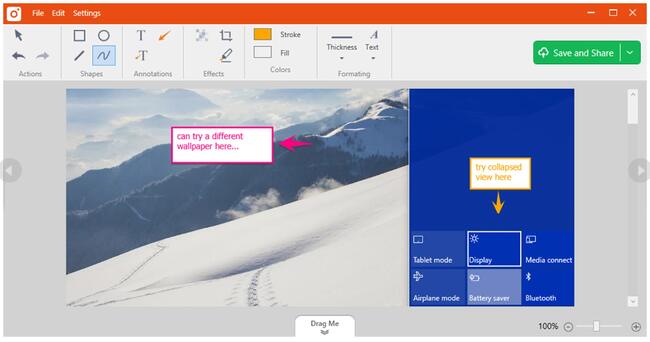
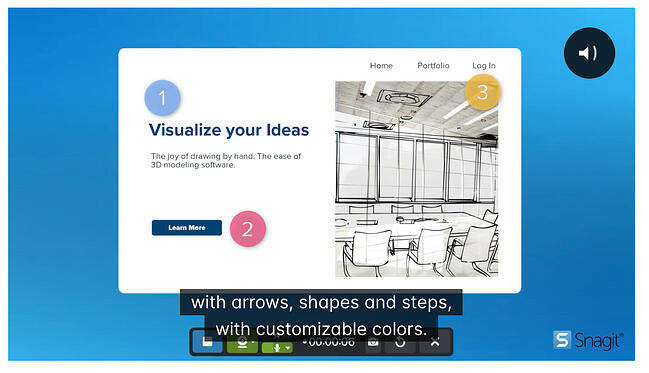
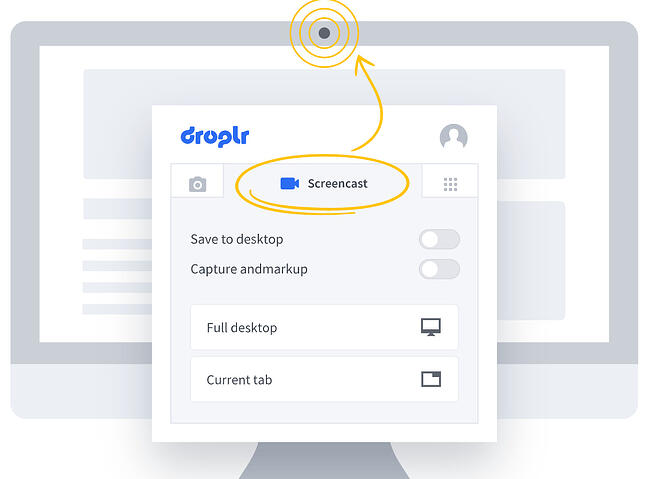

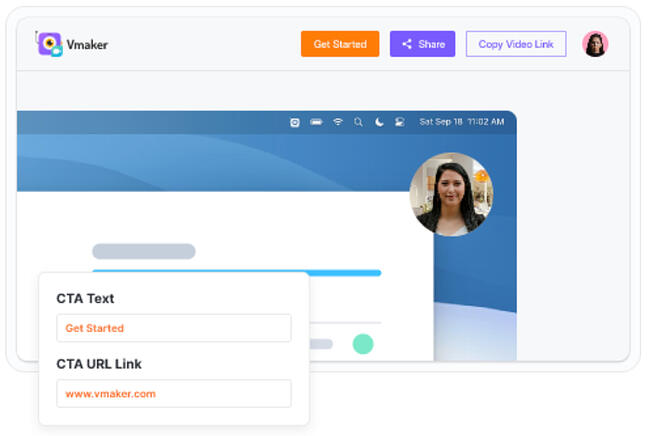
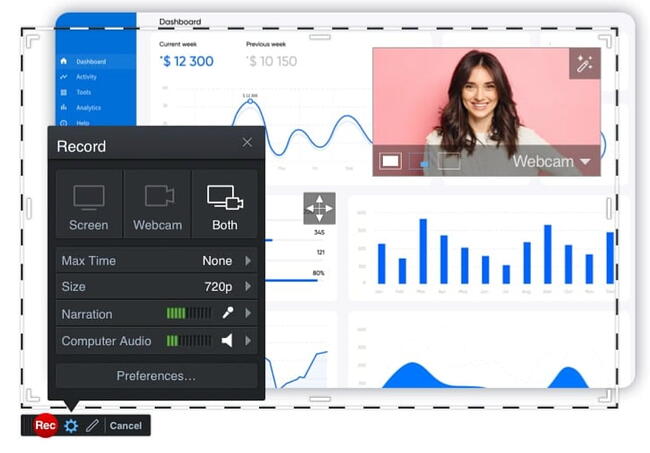
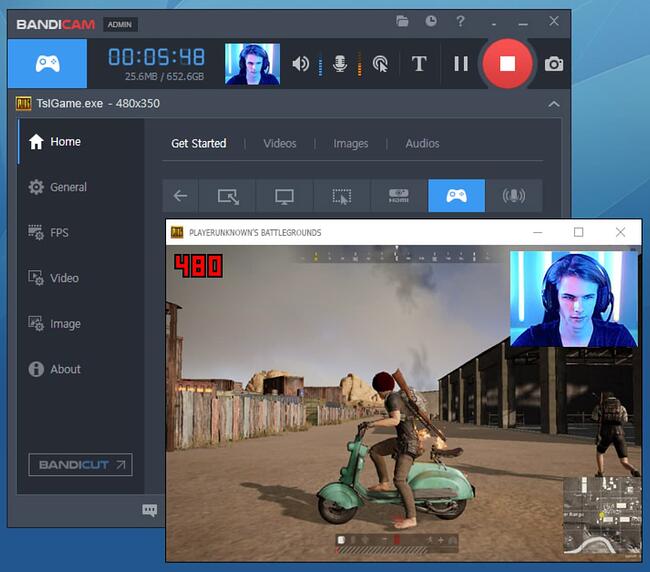















You must be logged in to post a comment Login